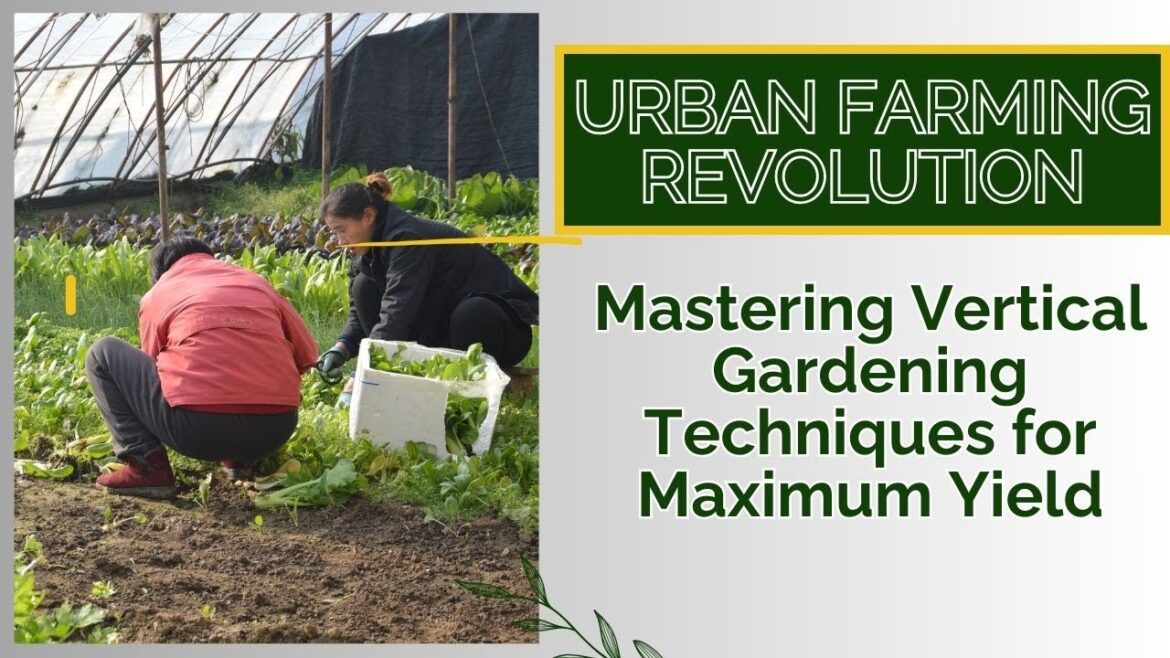Subscribe here👉: https://bit.ly/3AXtSpM
Agriculture and Technology – https://agriculturalinformation4u.com
__________________________________________________________________-
#urbanfarming #verticalgardening #sustainableliving #growyourownfood #cityfarming #rooftopgarden #containergardening #greenercities #localproduce #spacesavinggarden
__________________________________________________________________
Urban Farming: Growing Up in the City
As cities expand and green spaces shrink, urban farming and vertical gardening have emerged as innovative solutions to grow fresh produce in limited spaces. These techniques not only provide food security but also contribute to greener, more sustainable cities. Let’s explore how you can join this green revolution and transform your urban space into a thriving garden.
What is Urban Farming?
Urban farming involves growing food in urban areas, typically in small spaces like balconies, rooftops, or community gardens. It’s a response to increasing urbanization and the desire for locally-grown, fresh produce.
Vertical Gardening: The Sky’s the Limit
Vertical gardening takes urban farming to new heights—literally. This technique involves growing plants vertically, using walls, trellises, or specially designed structures. It’s perfect for maximizing space in cramped urban environments.
Key Vertical Gardening Techniques:
Living Walls: These are self-sufficient vertical gardens attached to interior or exterior walls. They use hydroponics or aeroponics systems to deliver water and nutrients.
Pocket Gardens: Fabric pockets filled with soil and attached to a wall or fence. They’re great for herbs and small vegetables.
Pallet Gardens: Upcycled wooden pallets turned into vertical planters. They’re cost-effective and customizable.
Tower Gardens: Vertical systems that use aeroponics to grow plants in a nutrient-rich mist environment.
Trellis and Vine Systems: Perfect for climbing plants like tomatoes, cucumbers, and beans.
Best Practices for Urban Vertical Gardening:
Choose the Right Plants: Opt for compact varieties and plants that naturally grow upward.
Ensure Proper Lighting: Most vegetables need at least 6 hours of sunlight daily. Use grow lights if natural light is insufficient.
Water Wisely: Install a drip irrigation system or use self-watering planters to maintain consistent moisture.
Use Quality Soil: In container gardens, use a lightweight, well-draining potting mix enriched with compost.
Practice Crop Rotation: Even in small spaces, rotate crops to prevent soil depletion and reduce pest problems.
Benefits of Urban Farming and Vertical Gardening:
Fresh, Organic Produce: Grow your own pesticide-free fruits and vegetables.
Space Efficiency: Maximize yields in minimal space.
Improved Air Quality: Plants act as natural air purifiers.
Energy Conservation: Green walls provide insulation, reducing energy costs.
Community Building: Shared gardens foster social connections.
Challenges and Solutions:
While urban farming has numerous benefits, it’s not without challenges. Limited sunlight, pollution, and weight restrictions on rooftops can pose problems. However, innovative solutions like hydroponic systems, pollution-resistant plant varieties, and lightweight growing mediums are addressing these issues.
Conclusion:
Urban farming and vertical gardening are more than trends—they’re sustainable solutions for food production in our increasingly urbanized world. By applying these techniques, you can transform your urban space into a productive, green oasis. Start small, experiment with different methods, and watch your urban garden gro
___________________________________________________________________________-
urban farming, vertical gardening, space-saving gardening techniques, rooftop gardens, container gardening, living walls, pocket gardens, tower gardens, sustainable urban living, grow your own food, city farming, urban agriculture, vertical growing systems, small space gardening, urban homesteading


1 Comment
Subscribe here👉: https://bit.ly/3AXtSpM